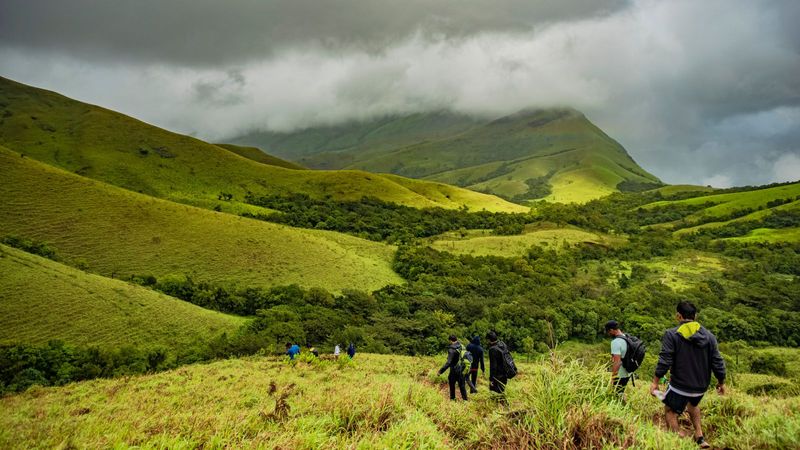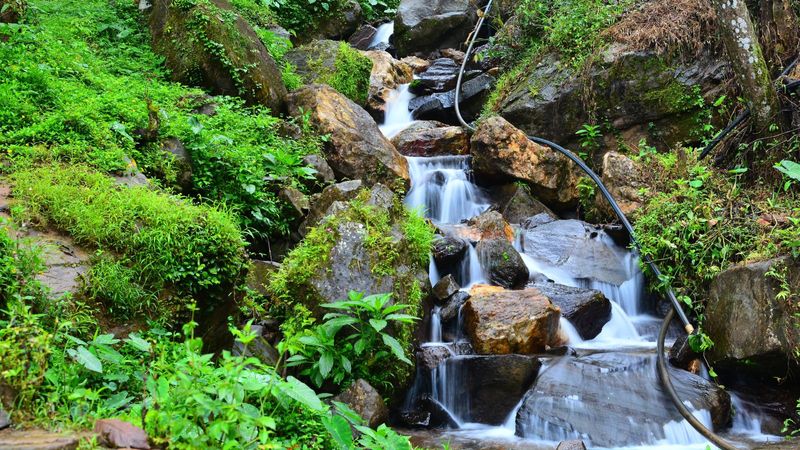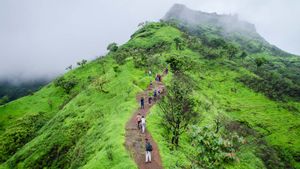The Kudremukh National Park in the Chikmagalur district of Karnataka is a favourite destination for all nature lovers, trekkers and wildlife enthusiasts. Known for its lush green landscapes, rolling hills, and rich biodiversity, Kudremukh National Park offers a perfect blend of adventure and peace. So, here’s an all-encompassing manual for you to explore Kudremukh National Park timings, its trekking routes, the best to visit, and everything else needed.
History and overview
Kudremukh, literally translated into horse face in Kannada, comes from the unique shape of its peak. This site was first declared a nature reserve in 1916 and later designated as Kudremukh National Park, in 1987. The park stretches over an area of nearly 600 square kilometres and is the second-largest national park in Karnataka. At one time, the region was involved in iron ore mining but conservationists protected and preserved its biodiversity, creating an area solely for natural beauty & pristine nature.
Kudremukh National Park trekking

The primary tourist activity in Kudremukh National Park is trekking. One of the most sought-after treks is Kudremukh National Park trekking which provides scenic viewpoints of Western Ghats. The Kudremukh peak trek is 9 km one way, starting from Mullodi village. It takes you through dense forests, bamboo shrubs, and grasslands, with several streams and waterfalls along the way.
Detailed trail information on the Kudremukh hills trek

Offering breathtaking views of western ghats and taking you through the lush green forests, rolling hills, and scenic valleys, the Kudremukh hills trek route of Karnataka can be divided into three sections. The Kudremukh Hills trek is approximately 18 kilometres round trip and is moderately difficult, making it enjoyable for both novice and experienced trekkers.
Section 1
Mullodi to Ontimara (Lone Tree)
Distance: 5 km
Duration: 2 hours
As soon as you have your permits from forest officials in hand, your Kudremukh hills trek begins. The trek starts at Mullodi village, which is about 15 km from Kalasa. Once you enter the Shola forest, the initial stretch takes you through dense forests and grasslands. The path is well-marked and offers sightings of diverse flora and fauna. As soon as you exit this stretch, you’ll clearly be able to see the first Ontimara.
Section 2
Ontimara to Final Stretch
Distance: 3 km
Duration: 1.5 hours
This section of the Kudremukh Hills trek is more challenging, with steep inclines and rocky terrain. The route offers stunning views of the rolling hills, surrounding valleys and occasional sightings of wildlife. From here, you can clearly see the Kudremukh peak, and the race to reach it starts.
Section 3
Final Stretch to Kudremukh Peak
Distance: 1 km
Duration: 30 minutes
The final leg of the trek is a steep climb to the Kudremukh peak. The trail becomes narrower and requires careful navigation since you’re trekking in the heart of Kudremukh valley now. Once at the top of Kudremukh Hill, the view is nothing less than a reward with 270-degree panoramic views of the Western Ghats, shrouded in mist and clouds.
Note: Kudremukh National Park trekking requires permits, available from the forest office in town. As Kudremukh National Park timings are only from 6 AM to 5 PM it is better to leave early. Just make sure you stock up on water and snacks, as well as pack a first-aid kit to help ensure that the trek is both safe and enjoyable.
Kudremukh Wildlife Sanctuary

Kudremukh Wildlife Sanctuary has a very rich biodiversity. It is home to over 200 bird species, making it a paradise for bird watchers. Notable species include the great pied hornbill, Malabar whistling thrush and imperial pigeon. Kudremukh Wildlife Sanctuary is also home to a plethora of mammals, including tigers, leopards, wild dogs, Malabar giant squirrels and sloth bears. The dense forests and rivers create an ideal habitat for these animals, offering ample opportunities for wildlife spotting.
Attractions and activities in Kudremukh National Park
Kadambi Waterfalls

The Kadambi Waterfalls are one of the most picturesque spots in the Kudremukh National Park. Bringing some peace to the lush greens, water cascades down rocky cliffs, creating a mesmerizing view. It is an ideal spot to take wonderful pictures at the same time rest and stretch your leg after a tiring trek.
Hanuman Gundi Falls

Very much within the Kudremukh National Park’s confines, Hanuman Gundi is another gorgeous waterfall that cascades from just over 100 feet. Visitors can enjoy a refreshing swim in the natural pool at the base of the falls, surrounded by the serene forest.
Exploring coffee and tea plantations

A predominant feature of the Kudremukh National Park is its proximity to coffee and tea plantations along much of its northeastern boundary. These plantations are available to visitors for leisurely walks, insights into cultivation methods and the fragrant aromas of fresh coffee leaves and tea bushes.
Best time to visit Kudremukh
The best time to visit Kudremukh National Park is between June to February. In these months the park is transformed into a green heaven, and the weather is pleasant with temperatures varying from 15°C to 25°C which makes it an ideal season for trekking and wildlife safari. Avoid the monsoon season from June to September as trails become slippery and stream crossings can be very challenging.
How to reach
Kudremukh National Park is well connected by road, rail, and air:
By Road: Kudremukh National Park is about 335 kilometres from Bangalore. You can take NH75 towards Mangalore, then turn onto the state highway leading to Chikmagalur and Kalasa.
By Air: The nearest airport is Mangalore International Airport, about 150 kilometres away. From the airport, you can hire a taxi to Kudremukh.
By Train: The closest major railway station is Hassan Junction, 100 kilometres from Kudremukh National Park. From there, you can take a taxi or bus to Kalasa, and then a jeep to Mullodi village.
Disclaimer: The details mentioned throughout this blog are sourced from publicly accessible platforms. At Zeezest, we intend to share factual and verified information. Should there be any inconsistencies or variances in the information provided, please understand that these are entirely unintentional and not meant to mislead.


_1721732419456_thumb_1200.jpeg?w=3840&q=75)

_1684325101519_thumb_300.png)